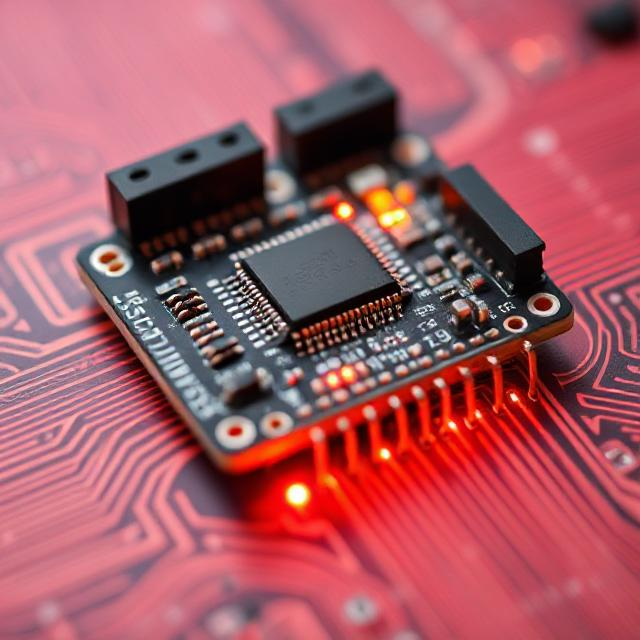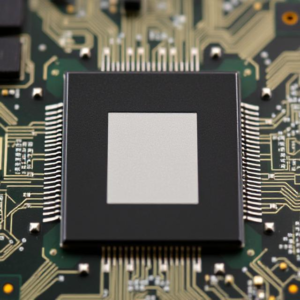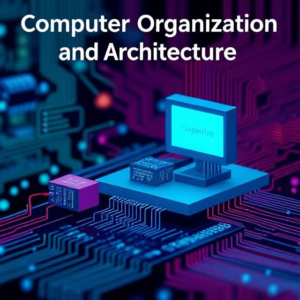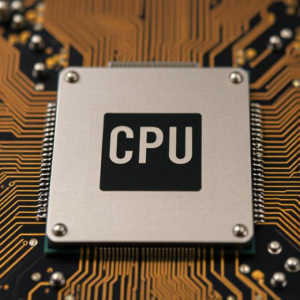A microcontroller is essentially a compact computer on a single chip, typically consisting of a CPU (Central Processing Unit), memory (RAM and ROM), and various peripherals. Peripherals are additional hardware components that extend the capabilities of the microcontroller, allowing it to perform specific tasks such as communication, input/output (I/O) operations, or control functions.

Peripherals can either be internal or external to the microcontroller, depending on the design. Internal peripherals are integrated directly into the chip, while external peripherals are connected via interfaces like USB, SPI, or I2C.
Some common examples of microcontroller peripherals include:
-
Timers and Counters: Used for measuring time, creating delays, and counting events.
-
Analog-to-Digital Converters (ADC): Convert analog signals (e.g., sensor readings) into digital values that the microcontroller can process.
-
Digital-to-Analog Converters (DAC): Convert digital values back into analog signals.
-
Pulse Width Modulation (PWM): Generates signals with varying duty cycles for controlling motors, LEDs, or other devices.
-
Serial Communication Interfaces: Facilitate communication with other devices or microcontrollers, often via UART, SPI, or I2C.
Key Microcontroller Interfaces
Interfaces are the “gateways” through which microcontrollers interact with external devices. These can be used to send or receive data, control external components, or synchronize actions between devices. Let’s take a look at the most common types of interfaces found in microcontrollers.
1. Universal Asynchronous Receiver-Transmitter (UART)
UART is a widely-used serial communication protocol that allows microcontrollers to communicate with other devices, such as sensors, GPS modules, or other microcontrollers. It is asynchronous, meaning it doesn’t require a clock signal for data transmission.
-
Advantages: Simple, reliable, and cost-effective.
-
Disadvantages: Limited speed and distance compared to other communication methods.
2. Serial Peripheral Interface (SPI)
SPI is a synchronous serial communication protocol used for high-speed data transfer. It uses four lines for communication:
-
MISO (Master In Slave Out): Data from slave to master.
-
MOSI (Master Out Slave In): Data from master to slave.
-
SCLK (Serial Clock): Clock signal for synchronization.
-
SS (Slave Select): A signal used to select the device.
-
Advantages: Faster data transfer than UART, supports multiple devices (master-slave configuration).
-
Disadvantages: Requires more pins compared to UART.
3. Inter-Integrated Circuit (I2C)
I2C is another communication protocol that allows multiple devices to communicate using just two wires: one for data (SDA) and one for clock (SCL). Each device on the I2C bus is assigned a unique address, allowing the master to communicate with multiple slaves.
-
Advantages: Requires fewer pins (only two lines), supports multiple devices.
-
Disadvantages: Slower data transfer rate compared to SPI.
4. Universal Serial Bus (USB)
USB is a standard interface that allows microcontrollers to connect with computers and other peripherals like printers, storage devices, or keyboards. USB communication provides power and data transfer over a single cable.
-
Advantages: High-speed data transfer, power supply to connected devices.
-
Disadvantages: More complex to implement in microcontrollers, requires additional hardware.
5. Inter-Device Communication (CAN)
The Controller Area Network (CAN) interface is primarily used in automotive and industrial applications. It enables reliable communication between multiple microcontrollers or devices over a bus, even in harsh environments.
-
Advantages: Robust, fault-tolerant, and supports multiple devices.
-
Disadvantages: More complex to configure than simpler protocols like UART or SPI.
Importance of Peripherals and Interfaces
Peripherals and interfaces allow microcontrollers to perform tasks beyond simple processing. Here’s why they are essential:
-
Extended Functionality: Peripherals enable microcontrollers to perform specialized functions such as controlling motors, reading sensor data, and interacting with displays.
-
Efficient Communication: Interfaces like UART, SPI, and I2C facilitate data exchange between microcontrollers and external devices, making them critical for applications such as IoT (Internet of Things) or embedded systems.
-
Real-Time Processing: Timers and PWM peripherals help microcontrollers respond to real-time events, enabling applications in robotics, automation, and signal processing.
-
Cost-Effective Design: Instead of adding complex external systems, microcontrollers with built-in peripherals can handle multiple tasks within a single chip, making the design process simpler and cheaper.
Example Applications
1. Home Automation
In a home automation system, a microcontroller can control devices like lights, thermostats, or security systems. Interfaces like Wi-Fi or Zigbee (using UART or SPI) allow the system to communicate with a smartphone or cloud-based server.
2. Automotive
In modern vehicles, microcontrollers control systems such as engine management, braking systems, and infotainment. The CAN bus interface allows the various systems in the car to communicate with each other efficiently.
3. Consumer Electronics
Devices like smartwatches or fitness trackers use microcontrollers to monitor sensors (e.g., heart rate or accelerometer) and communicate with a phone via Bluetooth (using UART or SPI).
Conclusion
Microcontroller peripherals and interfaces are the essential components that expand the capabilities of microcontrollers. From controlling motors with PWM to communicating with other devices using SPI or UART, these peripherals allow microcontrollers to perform complex tasks in various applications. Whether you’re designing a simple embedded system or a sophisticated industrial control system, understanding the role of these peripherals and interfaces is crucial to creating effective solutions.











